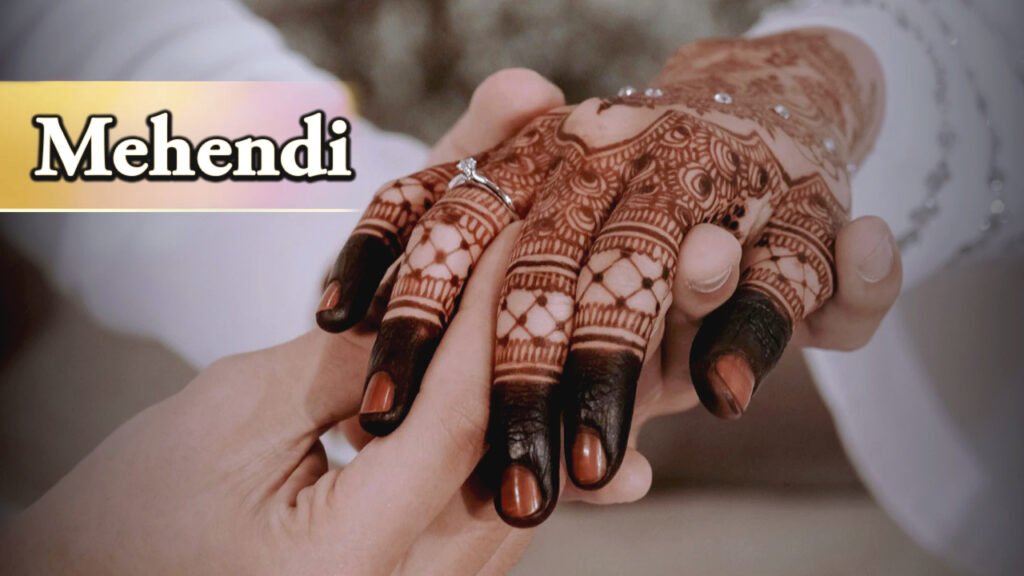Introduction to Mehendi
Have you ever marveled at the intricate designs adorning the hands and feet of brides or wondered about the reddish-brown stains on someone’s palms? Well, my friend, you’re about to embark on a fascinating journey into the world of mehendi! This ancient art form has captivated hearts and adorned bodies for centuries, and there’s so much more to it than meets the eye.
History of Mehendi
Ancient Origins
Let’s take a stroll down memory lane, shall we? Mehendi, also known as henna, has roots that stretch back thousands of years. Can you believe it? This beautiful tradition is older than many civilizations! The use of henna as a form of body art can be traced back to ancient Egypt, where it was used to color the fingernails of pharaohs and mummify their bodies. Talk about a timeless beauty secret!
Spread Across Cultures
But mehendi didn’t stay put in Egypt. Oh no, it had wanderlust! As trade routes expanded and cultures intermingled, the art of mehendi spread like wildfire. It found its way to India, the Middle East, and parts of Africa, each region adding its own unique flair to the practice. It’s like a game of cultural telephone, with each pass adding something new and exciting!
Significance of Mehendi
Cultural Importance
Now, let’s get to the heart of the matter. Mehendi isn’t just about looking pretty (although it certainly does that!). In many cultures, it holds deep significance. It’s a symbol of joy, celebration, and good fortune. Can you imagine a big fat Indian wedding without the bride’s hands covered in intricate mehendi designs? I didn’t think so!
Medicinal Properties
But wait, there’s more! Mehendi isn’t just a feast for the eyes; it’s got some tricks up its sleeve. The henna plant, from which mehendi is derived, has cooling properties. That’s why it’s often applied to the palms and soles of the feet in hot climates. It’s like nature’s own air conditioning system!
Symbolic Meanings
And let’s not forget the hidden messages in those swirls and patterns. In many traditions, it’s believed that the darker the mehendi stain, the deeper the love between the bride and groom. Some even hide the groom’s name within the intricate designs – a romantic treasure hunt, if you will!
Mehendi in Different Cultures
Indian Traditions
In India, mehendi is as essential to a wedding as the bride and groom themselves! The mehendi ceremony is a joyous occasion where the bride, surrounded by her female friends and family, gets elaborate designs applied to her hands and feet. It’s like a pre-wedding spa day, but with more giggles and gossip!
Middle Eastern Practices
Hop over to the Middle East, and you’ll find mehendi playing a starring role in various celebrations. In countries like Morocco and Egypt, it’s often used in night-of-the-henna parties before weddings. It’s their version of a bachelorette party, but with less embarrassing games and more beautiful body art!
African Customs
In parts of Africa, mehendi takes on a different character. It’s not just for special occasions; it’s a part of everyday life. In countries like Somalia and Sudan, women often adorn their hands with henna designs as a form of self-expression. It’s like wearing your personality on your skin!
The Art of Mehendi Application
Traditional Methods
Now, let’s get our hands dirty (or should I say, stained?). Traditionally, mehendi application was a skill passed down through generations. The paste is made from dried henna leaves, and the designs are applied using a cone made of plastic or cloth. It’s like cake decorating, but on skin!
Modern Techniques
But we’re in the 21st century, folks! While many still cherish the traditional methods, modern techniques have made mehendi more accessible than ever. From ready-made henna cones to stick-on designs, there’s something for everyone. It’s like the fast food of body art – quick, easy, and satisfying!
Astrological Connection of Mehendi
Planetary Influences
Now, here’s where things get really interesting. Did you know that mehendi has an astrological connection? In Vedic astrology, it’s believed that the application of mehendi can help balance the energies of Mars (Mangal) in one’s horoscope. It’s like wearing a good luck charm, but way more stylish!
Zodiac Designs
Some mehendi artists even incorporate zodiac symbols into their designs. Imagine wearing your star sign on your hands – it’s like a cosmic tattoo that fades away just in time for you to try a new design!
Mehendi in Wedding Rituals
Bridal Mehendi
For many brides, the mehendi ceremony is one of the most anticipated pre-wedding events. It’s a time of laughter, bonding, and of course, stunning body art. The designs often cover the entire hands and feet, sometimes extending up to the elbows and knees. It’s like wearing the most intricate, temporary wedding dress!
Significance for the Couple
But it’s not just about the bride. In some traditions, the groom gets a small design too. It’s believed to strengthen the bond between the couple. Think of it as a matching set of wedding rings, but on a much grander scale!
Types of Mehendi Designs
Traditional Patterns
Traditional mehendidesigns are a feast for the eyes. From intricate paisleys to delicate flowers, these patterns have been perfected over centuries. Each region has its own signature style – it’s like a geographical map of artistic traditions!
Contemporary Styles
But mehendiisn’t stuck in the past. Modern artists are pushing the boundaries, creating designs that blend traditional motifs with contemporary aesthetics. From minimalist patterns to elaborate portraits, the sky’s the limit. It’s like watching tradition and innovation dance together on someone’s skin!
Read Also: Dreams and its astrological significance
Conclusion
As we’ve seen, mehendi is so much more than just a pretty design. It’s a living, breathing art form that carries centuries of history, cultural significance, and even astrological beliefs. Whether you’re a bride-to-be, a fashion enthusiast, or just someone who appreciates beautiful things, there’s something in the world of mehendi for everyone. So why not give it a try? Who knows, you might just find yourself falling in love with this ancient art form!
For interesting astrology-related videos, subscribe to us on YouTube
FAQs
- How long does mehenditypically last on the skin?Mehendi usually lasts for 1-3 weeks, depending on the quality of the henna and how well you care for it.
- Is mehendisafe for everyone?While natural henna is generally safe, some people may be allergic. Always do a patch test first and avoid black henna, which can cause severe reactions.
- Can men wear mehenditoo?Absolutely! While it’s more common for women, men in many cultures also wear mehendi, especially during weddings and festivals.
- Does mehendihave any effect on nail growth?Some believe that mehendican strengthen nails and promote growth, but scientific evidence for this is limited.
- Can I apply mehendimyself at home?Yes, you can! There are many DIY kits available. However, achieving intricate designs takes practice, so don’t be discouraged if your first attempt isn’t perfect.

